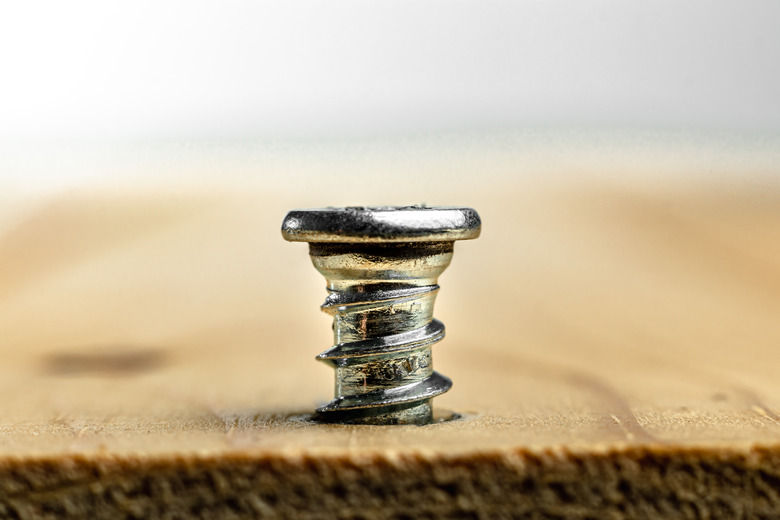How To Cover Screw Holes On Wood
We may receive a commission on purchases made from links.
Screws help you make secure connections when you're building furniture or working with wood in other ways, but visible screw heads on the finished project don't give it that professional look you want. By counterboring your screws and filling in the holes, you get a clean, smooth look on the finished wood item.
Countersink Your Screws
Countersink Your Screws
The best way to hide screws in wood is to counterbore them when you install them. You'll need a countersink drill bit to drill a pilot hole that allows you to recess the screw into the wood, which is called a counterbore. These bits come in different sizes, so you'll need one that matches your screw size and type and allows you to recess the screw head enough to fit a plug in over it. Attach the countersink drill head, drill your pilot hole, and insert the screw to make the head sit below the surface of the wood to prepare it for filling.
Use Store-Bought Plugs
Use Store-Bought Plugs
You can buy premade wood plugs or buttons that fit into various-size holes for a quick, easy solution. They often have a rounded, mushroomlike top that sticks out beyond the wood surface. This option creates a decorative cover for your screw holes, but it's noticeable when looking at the project since it sticks out. If you're leaving the wood bare or staining it, you might have difficulty getting plugs that match the wood grain. They also tend to soak up more stain than the rest of the wood, which can make the plugs stand out as a different color.
To use these premade plugs, put a little wood glue on the end. Place the plug in the hole and tap gently with a hammer. You can then paint or stain the piece, including the plug.
Make Wood Plugs
Make Wood Plugs
If you want a more disguised look, you can cut homemade plugs using scrap wood that matches your project. This task requires a drill press fitted with a wood plug cutter to create perfectly round plugs. Use a piece of wood that allows you to create a face-grain plug that will match the grain of the wood pieces the best.
You'll put glue on the end and insert the plug into the hole as you would with a store-bought plug. However, you'll need to use a chisel and mallet to cut off the excess so the homemade plug is level with the surface. With the beveled side of the chisel tool facing down, hold it to make the blade parallel with the plug's wood grain. Keep the chisel at a low angle and tap it to cut the plug about 1/16 inch above the surface. You can then sand the plug flat with the surrounding wood and finish it with paint or stain.
